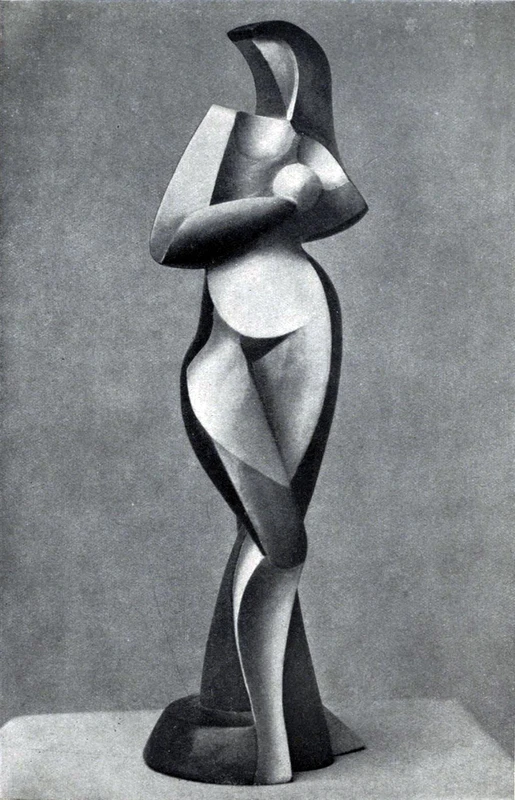Alexander Archipenko


b. 1887, United States
d. 1964
Ukrainian sculptor, 1887-1964, active in France and the United States
Alexander Archipenko was born May 30, 1887, in Kiev, Russia (now Kyiv, Ukraine). In 1902, he entered the Kiev Art School, where he studied painting and sculpture until 1905. During this time, he was impressed by the Byzantine icons, frescoes, and mosaics of Kiev. After a sojourn in Moscow, Archipenko moved to Paris in 1908. He attended the Ecole des Beaux-Arts for a brief period and then continued to study independently at the Musée du Louvre, where he was drawn to Egyptian, Assyrian, archaic Greek, and early Gothic sculpture. In 1910, he began exhibiting at the Salon des Indépendants, Paris, and the following year showed for the first time at the Salon d’Automne.
In 1912, Archipenko was given his first solo show in Germany at the Museum Folkwang Hagen. That same year, in Paris, he opened the first of his many art schools, joined the Section d’Or group, which included Georges Braque, Marcel Duchamp, Fernand Léger, and Pablo Picasso, among others, and produced his first painted reliefs, the Sculpto-Peintures. In 1913, Archipenko exhibited at the Armory Show in New York and made his first prints, which were reproduced in the Italian Futurist publication Lacerba in 1914. He participated in the Salon des Indépendants in 1914 and the Venice Biennale in 1920. During the war years, the artist resided in Cimiez, a suburb of Nice. From 1919 to 1921, he traveled to Geneva, Zurich, Paris, London, Brussels, Athens, and other European cities to exhibit his work. Archipenko’s first solo show in the United States was held at the Société Anonyme, New York, in 1921.
In 1923, he moved from Berlin to the United States, where over the years he opened art schools in New York City; Woodstock, New York; Los Angeles; and Chicago. In 1924, Archipenko invented his first kinetic work, Archipentura. For the next 30 years, he taught throughout the United States at art schools and universities, including the short-lived New Bauhaus. He became a United States citizen in 1928. Most of Archipenko’s work in German museums was confiscated by the Nazis in their purge of “degenerate art.” In 1947, he produced the first of his sculptures that are illuminated from within. He accompanied an exhibition of his work throughout Germany in 1955–56, and at this time began his book Archipenko: Fifty Creative Years 1908–1958, published in 1960. Archipenko died February 25, 1964, in New York.